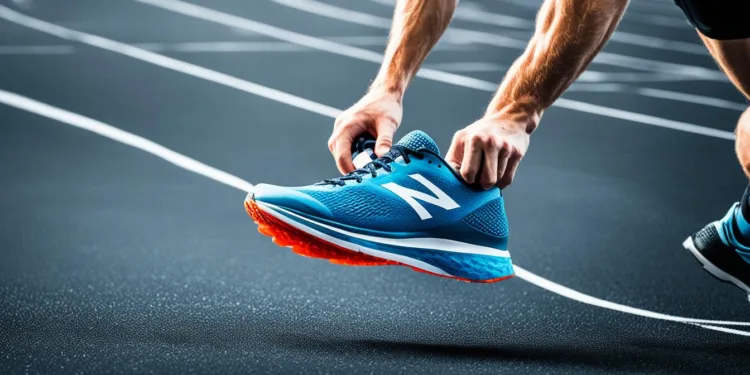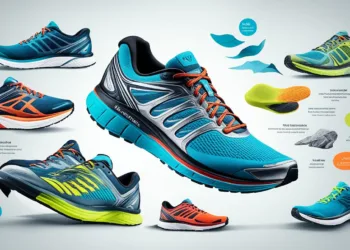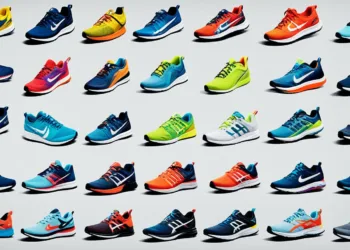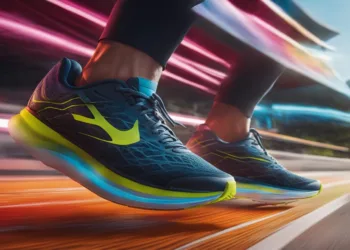Table of Contents
Running Shoes Research and Development؛ As you immerse yourself in the evolving world of running shoes, you’ll come across groundbreaking innovations in Running Shoe R&D, advancements that are setting new performance and comfort standards. Notably, teams like those at MIT are making impressive strides in this field.
Imagine a future where you could receive personalized footwear based on a simple video of your running style. That’s the kind of moonshot this research is propelling. Think perfect fit-for-purpose design, but taken to a new, personal level. This progression in Running Shoes R&D could revolutionize not only sneaker design and function but also your experience selecting your running footwear.
Regarding novel features, 3D-printed shoes are one such innovation on the horizon. These aren’t just prototypes in a lab but already demonstrate their potential in the competitive market. As you can see, the advancements in running shoe technology are traversing boundaries and shaping the future of athletic footwear.
Understanding the Complex Needs of Runners
When it comes to Running Shoe R&D, understanding individual runners’ varied needs and mechanics becomes an intricate science. Each runner brings unique needs to the table based on their running style, pace, and biomechanics. With the advent of advanced algorithms and modelling techniques, the possibility of creating a truly custom running shoe is becoming ever closer to reality.

Individual Differences in Running Mechanics
Running mechanics are primarily dictated by individual traits such as biomechanics, body architecture, and limb coordination. Shoe properties like midsole stiffness and springiness significantly impact a runner’s performance and energy expenditure. Hence, the challenge in Running Shoe R&D stems from designing footwear to accommodate these unique mechanics and enhance a runner’s pace and efficiency.
“read more about Running Shoes 2024: What to Expect in Next Year’s Innovations“
From Casual Joggers to Elite Marathoners: Catering to All Levels
The realm of runners extends from novice joggers to elite marathoners, each gaining immensely from footwear optimized for their running style and needs. With the development of new running shoes, the aim is to create a versatile system to design custom shoes. This transformation could benefit runners across all levels by providing tailored footwear to their needs.
Simulating Gait Patterns for Optimal Shoe Design
The innovative MIT model, pivotal in advancing the future of running shoe research, aims to simulate gait patterns for optimal shoe design. While the model has already displayed accuracy with varied shoe types, it still faces hurdles when distinguishing between similar commercial designs. Nonetheless, its continued refinement could lead to unexplored possibilities in the design of custom shoes, paving an exciting road ahead.
Indeed, the science of customizing running shoes to match individual needs is a rapidly evolving field, leveraging cutting-edge tools and computational models. As we continue to make strides in understanding runners’ distinct needs, the dream of an individualized running shoe, perfectly moulded to each runner’s unique gait, is edging closer to reality.
“read more about Running Shoes for Yoga: Support and Grip for Your Practice“
Integrating Advanced Technologies in Running Shoes R&D
Integrating sophisticated technologies into the development and research of running footwear has resulted in significant advancements within the sports footwear industry. These breakthrough developments are exhibited impeccably through growth trajectories mirrored by renowned brands such as On Running. The rapid ascent of On Running is partly fueled by Nike’s strategic pivot towards a more direct-to-consumer model. This shift in strategy empowers brands, enabling them to engage directly with their audience, bypassing the intermediaries that traditional retail channels often present.
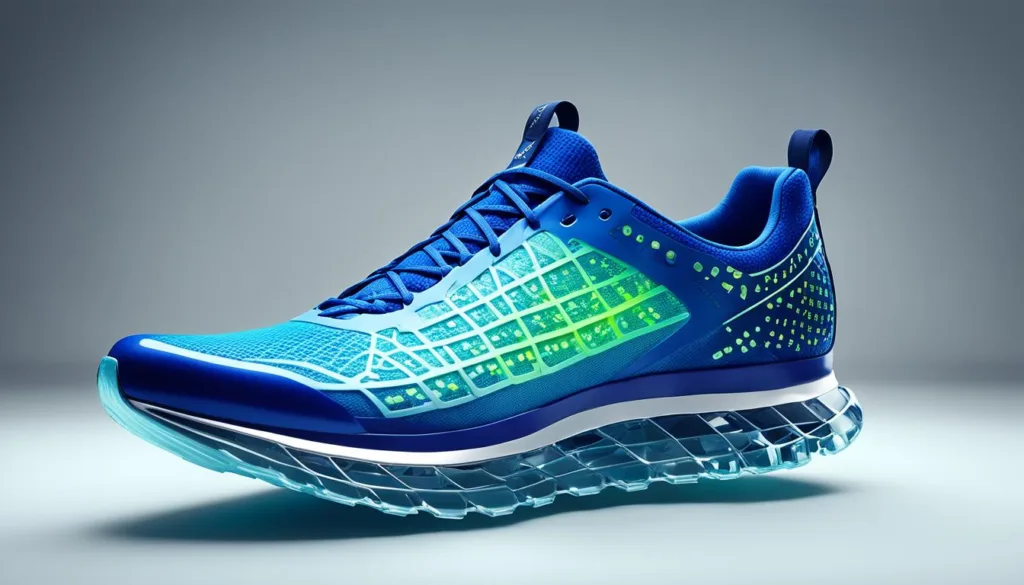
This strategic evolution incorporates a powerful online presence that fosters a strong brand identity. Brands can thus nurture and fortify a loyal consumer base through stronger connections and personalized experiences. As traditional retail faces setbacks from the digital shift, brands display an increased tendency to resonate with modern consumers through these innovative sales channels. The benefits of this approach are multifaceted; brands stand to gain from leveraging technological advancements and incorporating data insights to continually refine their offerings in response to changing consumer demands and behaviours.
Key factors attributing to the success of integrating advanced technologies in running footwear research and development include:
- Direct engagement with consumers, bypassing traditional retail channels
- Fostering a powerful brand identity through an impactful online presence
- Building stronger connections with consumers by offering personalized experiences
- Leveraging technological advancements and data insights to adapt to changing consumer demands and behaviours.
The evolving research landscape in running footwear is initiating a shift in the operational strategies of brands within the industry. This shift is dictated predominantly by consumer behaviours and preferences increasingly centring around the digital realm. As running shoe development insights expand, brands must find innovative ways to resonate with their consumers, ensuring their offerings align with consumer expectations while remaining relevant within the highly competitive running shoe market.
“read more about Running Shoes with Temperature Control: Comfort in Every Climate“
Running Shoes Research and Development: Predictive Modeling for Performance
The future of running shoe design is shaped by predictive modelling in its research and development. This particular aspect of R&D offers valuable insights into optimizing runners’ performance. MIT engineers have developed a groundbreaking model that forecasts a runner’s gait response to different types of footwear. Designers use these insights to create running shoes that minimize energetic costs—a crucial factor in optimizing performance during a run.
MIT’s predictive modelling research focuses on 3D-printed midsoles. These midsoles serve as a scaffold that can be customized for varying levels of bounce and stiffness. This approach stems from the groundbreaking study conducted by Thomas McMahon on the spring and damper model, which emphasized the importance of a shoe’s compatibility with a runner’s natural gait.
With predictive modelling, shoe designers have a quantitative basis for creating specialized shoes supporting various running events—from short-distance tracks to marathons. Through these R&D innovations in running shoes, we’re witnessing the potential of how advanced modelling techniques could reshape the industry.
| Advances | Impact | Relevance |
|---|---|---|
| Predictive Modeling | Optimizing performance | Allows customization based on running mechanics |
| 3D-Printed Midsoles | Customization of bounce and stiffness | Creates a shoe compatible with a runner’s natural gait |
| Future Prospects | Potentially reshape the running shoe industry | Create specialized shoes for various running events |
Innovations in Running Shoe R&D: The Role of 3D Printing
The merger of 3D printing technology with innovations in Running Shoe R&D has substantially reshaped the sports footwear industry, pushing boundaries in running footwear design. This blend of technology and design gives shoe engineers unique tools to craft running shoes, boasting unparalleled features.
“read more about Running Shoes with Heel Counter: Enhanced Stability and Support”
Tailored Shoe Properties Through Customizable Midsoles
One compelling aspect of 3D printing is its potential to create intricate scaffold designs. This ability allows for local adjustments of material responses, enabling the development of customizable midsoles. Such a transformative innovation is dramatically overhauling sneaker design. This fresh approach provides a chance to evolve footwear with varying levels of bounce and stiffness explicitly tailored to a runner’s needs and preferences.
Revolutionizing Sneaker Design with Additive Manufacturing
While 3D printing is already having a substantial impact on sneaker design, continuous developments within this field promise even more dramatic changes. Each technological advancement spawns an array of possibilities for refining shoe properties and optimizing athlete performance. As such, the influence of 3D printing on new running shoe development is increasingly significant, playing a major role in the industry’s relentless pursuit of performance excellence.


